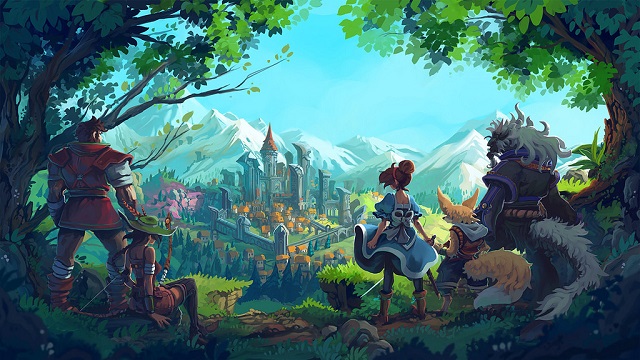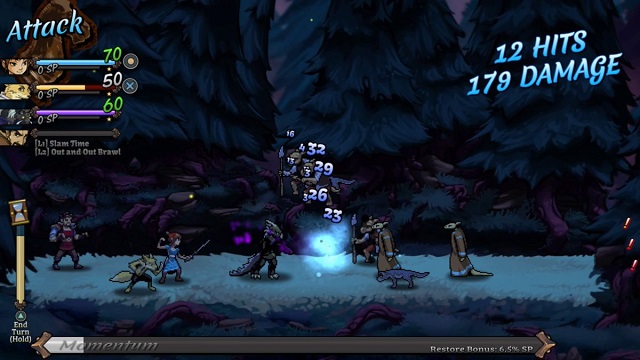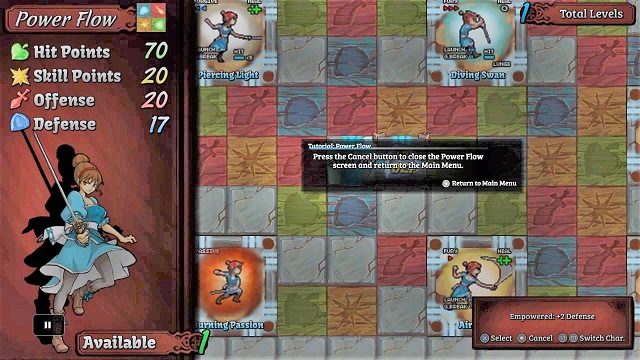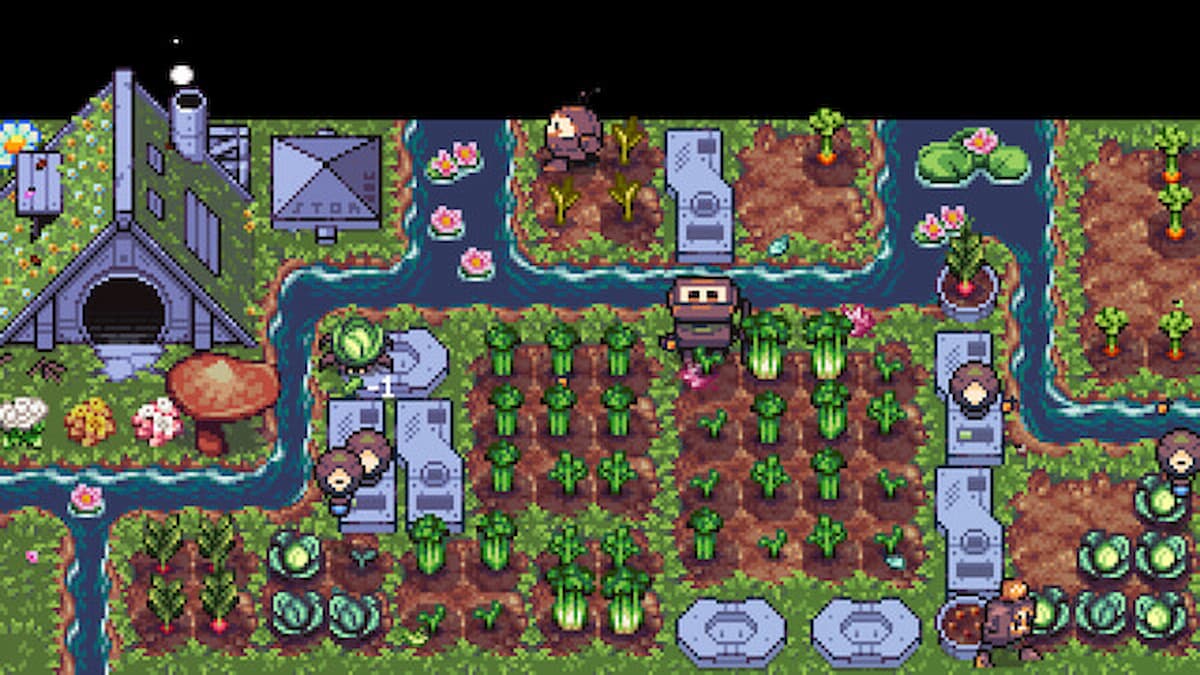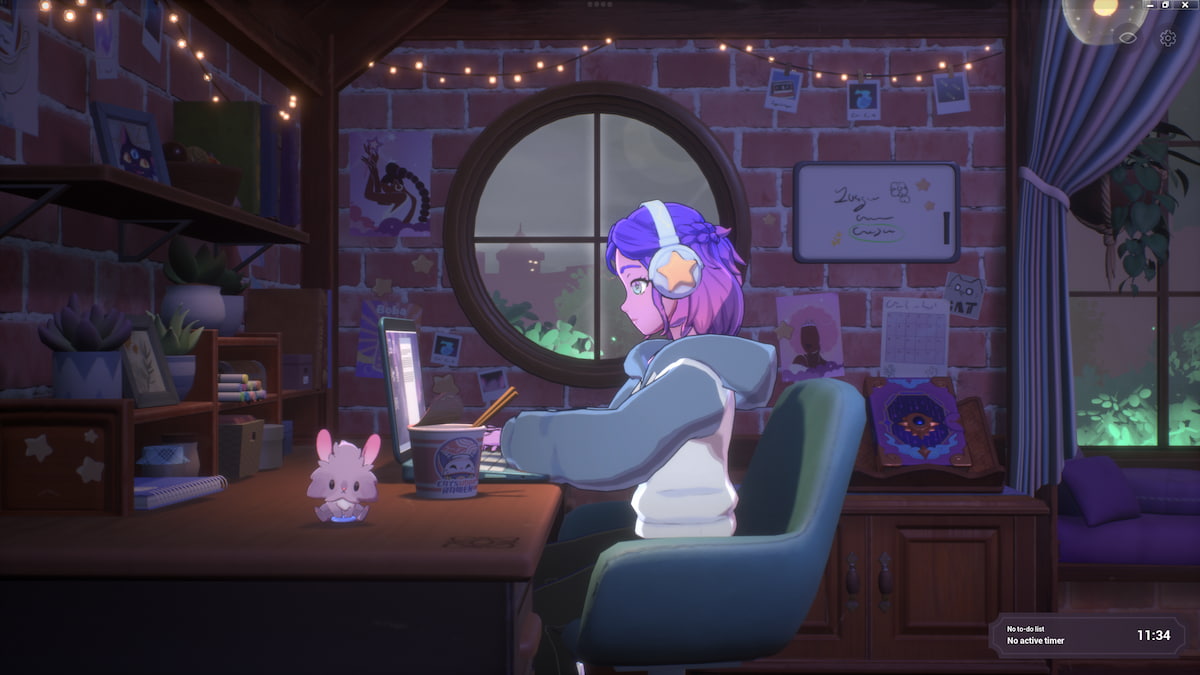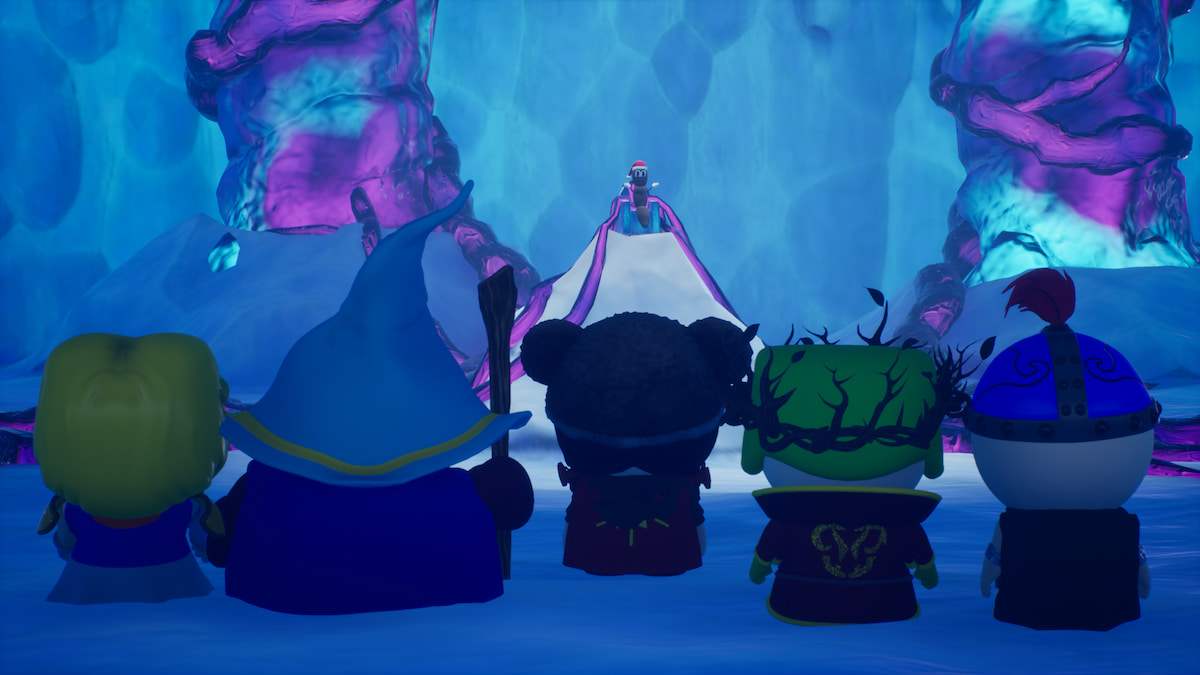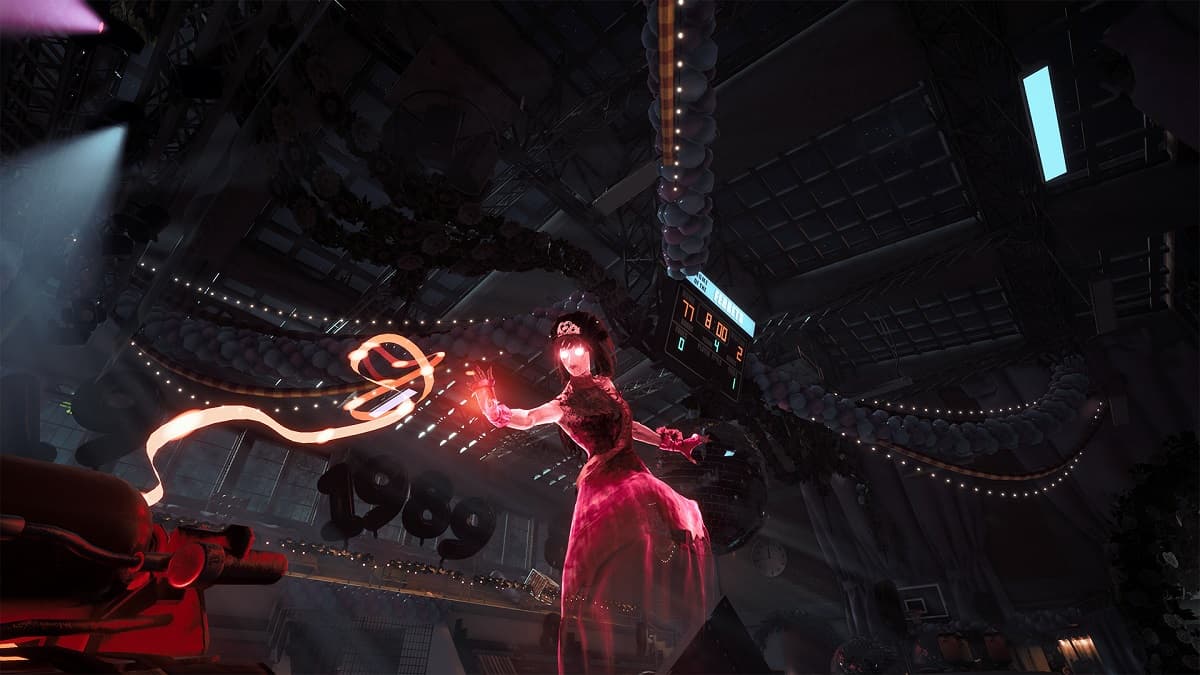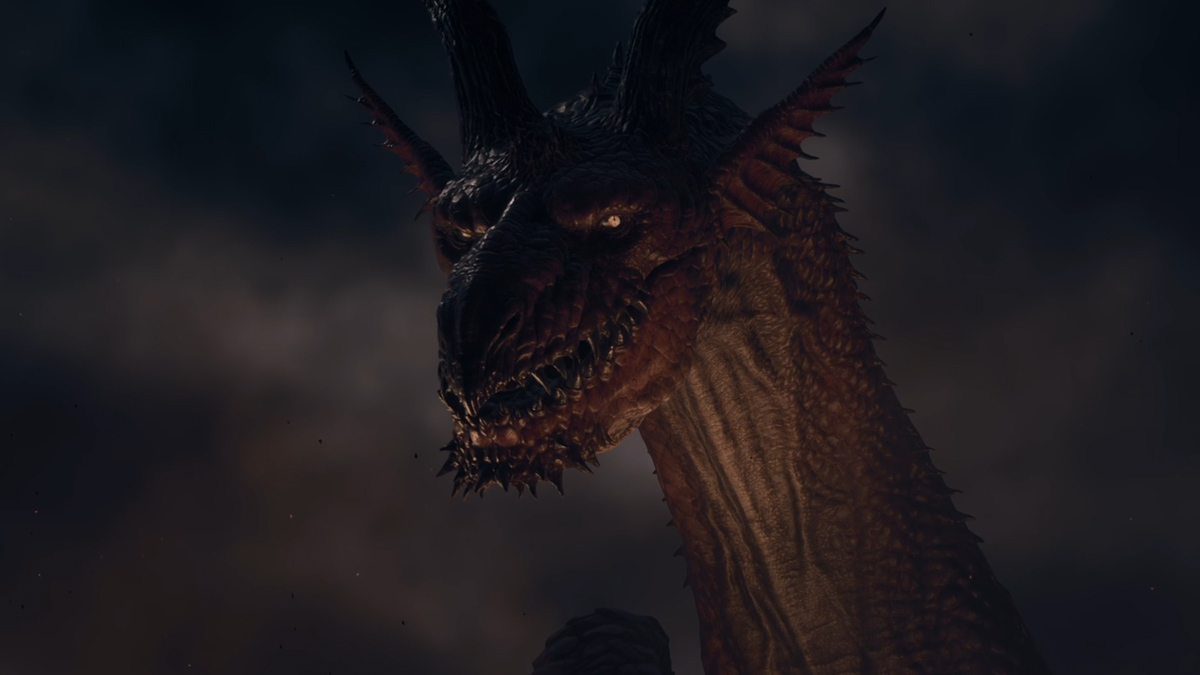The Tenth Line is the first commercial game project from Sungazer Software and was created by Elliot Mahan over the course of 2 years. Mahan handled the concept, design, production, programming, writing, and marketing/distribution outreach by himself while others handled the art and sound design.
The Tenth Line is heavily inspired by PlayStation RPGs of the 90’s, such as the Final Fantasy titles of that era. The game prides itself on “unique” gameplay, “quick” 2D platforming, and “a fantastical story about friendship, faith, and finding your place in the world.” Those are some decent qualities to aspire to, but is The Tenth Line able to deliver on all of these promises? Let’s find out.
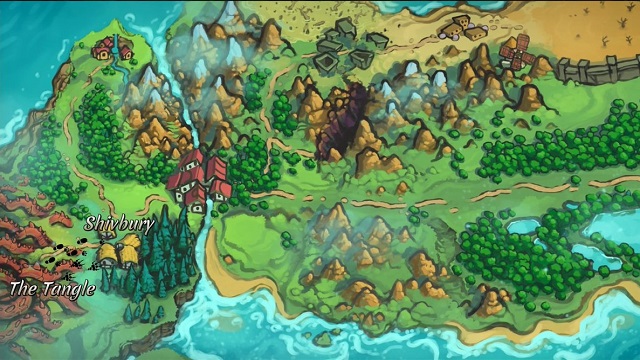
A Fantastical Story in a Typical RPG World
The Tenth Line takes place in a world populated by humans and various fantastical creatures, who struggle to coexist following the assassination of the king of an area called Skyweather. The player controls the Princess of Easania, a small kingdom with little influence, on the run from a mysterious cult. After escaping from them, she recruits two peculiar beastmen that she meets in the forest, promising them wealth and glory as long as they get her home safely. Of course, not everything goes as planned and the group sets out on a grand adventure to save the world from destruction.
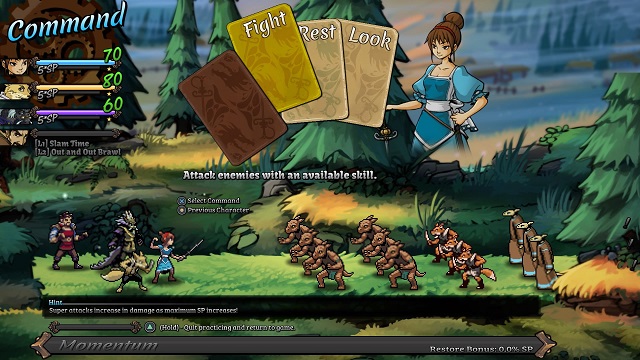
Well Known Gameplay Features, Which Don’t Do Anything Differently
There are some common RPG gameplay elements in The Tenth Line, but the game fails to put a unique spin on them, making it feel like they were all taken straight from other games without offering any changes to make them feel new or different. This lack of an unique identity often left me feeling bored.
3 Different Modes
A considerate feature of The Tenth Line is its three difficulty modes. There is a “Full Challenge” difficulty mode in which everything is intact. It is also the only mode which includes post-game content, special challenges, and a New Game Plus option. Then there is the “Light” difficulty mode, which plays closer to a more traditional RPG with training and specialties removed. Lastly, there is a “story” difficulty mode that keeps the exploration, platforming, and story intact. However, story battles are greatly reduced in difficulty and all other enemy encounters are removed entirely, which removes any need to leveling up.
The “Full Challenge” mode is recommended for veterans of the genre. The “Light” is recommended for more casual players who want a slightly simplified experience. And the “Story” mode is recommended for players who are more interested in the story than the gameplay. Personally, I prefer the “Light” mode, as battles are more appropriately paced and don’t feel slow when fighting multiple enemies, as they sometimes would in “Full Challenge” mode.
There are also some unique dynamics associated with each of these modes which I will mention below.
Active Time Battles
Battles in The Tenth Line use an active time battle system similar to some Final Fantasy games. Players can choose skills for each character to perform, then carry them out with well-timed button presses. There are three options for each core party member when fighting enemies: Fight, which is self-explanatory; Rest, which restores HP and SP (Skill Points); and Look, which examines the enemy.
All attacks cost a certain amount of SP and main party characters aren’t allowed to use the same attack two turns in a row regardless. If one character defeats an enemy that another character was going to attack after, the latter character wastes their attack on nothing instead of switching targets, which could be frustrating or tactical, depending upon the situation.
The party also has two assist characters who can each use one of two attacks once their SP gauge is filled, depending on whether the gauge is 25% or 100% full. These characters feel unnecessarily strong because they can take out several enemies at once — albeit from specific ranges — cannot be attacked, and don’t have levels. They’re useful but can also hinder a player’s strategy by defeating characters that you may have had another character also plan on attacking — as previously mentioned — making certain strategies somewhat more difficult to implement.
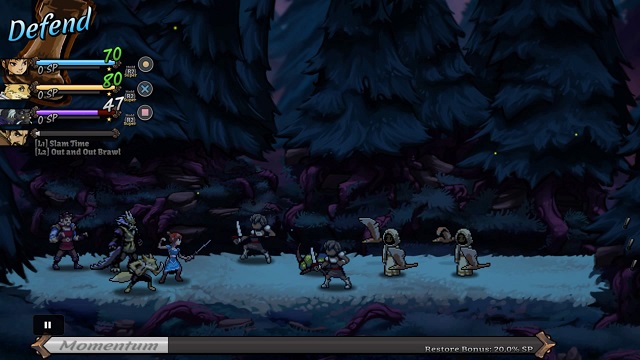
When it’s the enemy’s turn to attack players can have their party members defend by again using well-timed button presses. Party members can only defend from one attack each turn, and with around 9 or more enemies at a time in most fights, it’s difficult to determine which enemy will attack which character. It can also feel awkward to press each character’s defend button at the same time, but fast and unpredictable enemy attacks can make this a requirement at times. If a character defends from a weaker enemy’s attack then gets hit by a stronger enemy, it can feel unfair. In “Light” mode this particular problem wasn’t an issue but it did happen a few times in “Full Challenge” mode.
In addition to regular defending, each character has a super defense which can protect them from specific attacks — for example, the dracon — a dragon person type of beastman — character, Tox, can resist magic attacks. Super defenses can only be used once before they have to be recharged, but this doesn’t take long. Fighting and defending also gives the party Momentum, which allows characters to generate more SP to use their strongest attacks.
In “Full Challenge” mode, enemy encounters can seem endless. In this mode, many encounters will start with ~9 enemies with reinforcements arriving as each is defeated. Because enemies are usually replaced with carbon copies which also die and get replaced with identical foes, the gameplay can feel somewhat repetitive and boring.
In light mode, however, these features aren’t as tough to manage with a slower attack timer, slightly slower and weaker enemies, and other simplified mechanics.
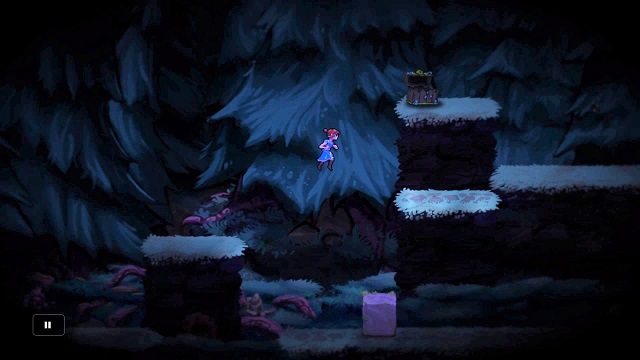
Slow Platforming
Rather than the top down or 3D third person view of a typical RPG, The Tenth Line features side-scrolling platforming, similar to the Valkyrie Profiles titles. Each core party member can jump and also has their own world skill — such as the princess being able to push certain obstacles or beast man Rik being able to engage enemies from a distance. The platforming would be fine if it wasn’t for the fact the player has to get all three core party members through each area separately one by one, since they don’t jump between platforms on their own despite the follow option, which feels rather useless after this revelation.
Characters will also get constantly attacked by nearby enemies when jumping between platforms, so there are always bound to be a few unwanted battles in “Full Challenge” or “Light” modes when traversing through an area. If an enemy engages a lone character in battle, the other characters join in after 1 or 2 turns depending on how far they are.
On paper this was a neat concept, but in practice it just made me more frustrated that characters didn’t properly follow one another on the overworld in the first place. If they can join in battle from being far away why can’t they jump across platforms by themselves? A small inconsistency, but irritating nonetheless.
The All Too Familiar Power Flow System
A feature called the Power Flow board allows characters to have their stats increased or learn new skills, similar to the systems seen in games like Rogue Galaxy or Final Fantasy XII. It seems that the power flow board increases stats in place of stat increases from leveling up, or it at least increases them more, making levels seem almost pointless.
There is also a Training option in “Full Challenge” mode, where characters can make certain attack types stronger. This is done by giving them consumable items which each provide a different amount of experience.
Items in The Tenth Line are only for the power flow board and training as there aren’t any recovery items — which magic skills and resting are used for instead — or no armor and weapons to equip. Weapons instead level up through story events.
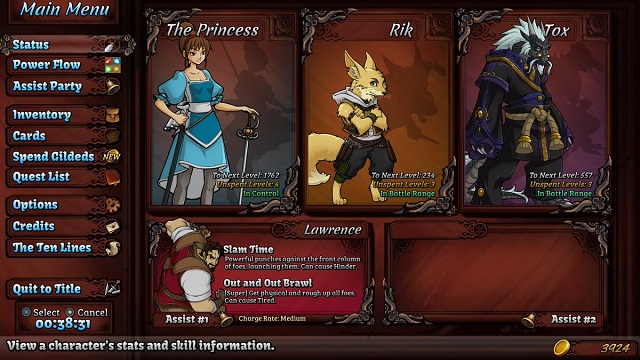
Conflicting Art Styles
The graphical and art styles in The Tenth Line aren’t anywhere near the worst I’ve ever seen, but it definitely leaves something to be desired. The pixel art graphics are okay, but they do suffer from some rough animation. In game character art is reminiscent of a cross between the browser based MMO Adventure Quest and generic pieces seen on DeviantArt. In stark contrast to this, the out of game artwork — shown in the header image — is phenomenal. This all just ended up leaving a bad taste in my mouth as it felt that the game often wasn’t as pretty as maybe it could have been.
A Contingent Soundtrack
The music featured in The Tenth Line is hit or miss. Some tracks are enjoyable and get stuck in your head easily, while others are a bit more basic and forgettable — such as the elevator music which plays in practice battles. At times it was difficult to determine if the way these lesser tracks sounded was intentional or not.
The Final Verdict — An RPG Which Provides Nothing New
The Tenth Line is definitely not a “bad” game, but it lacks the quality and spirit that other RPGs — even some of the lower budget indie titles that it is competing directly against — have. The game also doesn’t do much to help flesh out its own identity. The game seems like it rips a lot of its attributes out of the games which inspired it, rather than just taking cues from those attributes and transforming them into its own.
If the game interests you, or if you’re just a dedicated fan of JRPGs, then you might as well try out The Tenth Line for yourself. But in a relatively saturated market, there are plenty of other better similar RPGs out there, including the games which inspired The Tenth Line, many of which are readily available nowadays.
The Tenth Line is available on PlayStation 4 through the PlayStation Store and on Steam.
A review copy of the game was provided by Sungazer Software.

